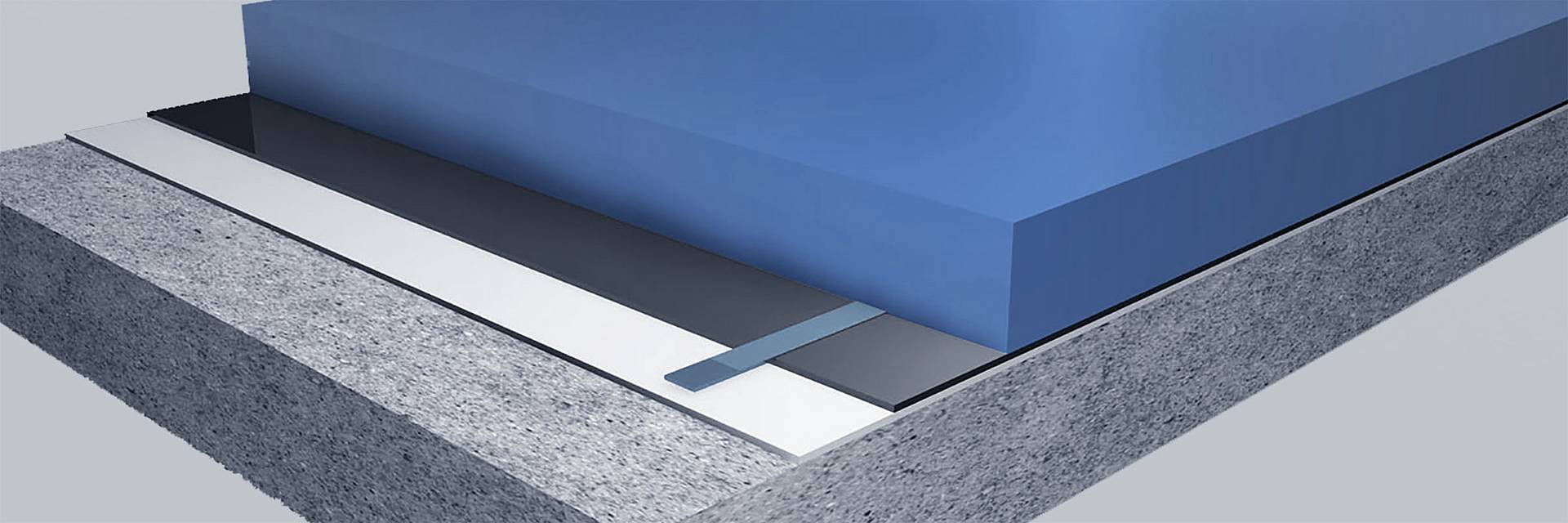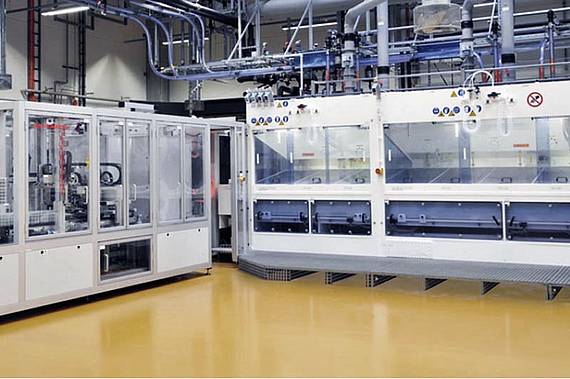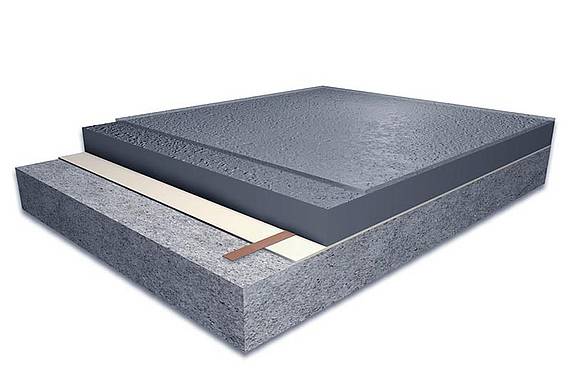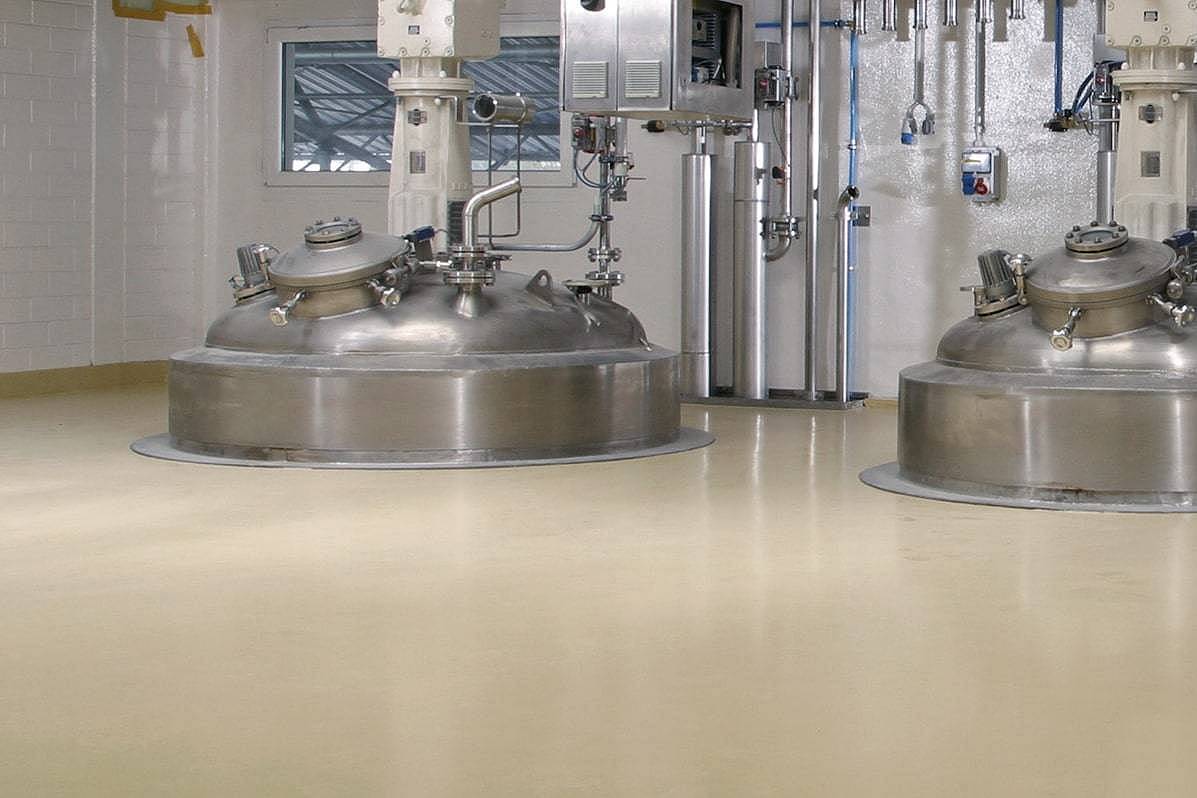Electrically conductive floor coatings reliably protect sensitive plant components from electrostatic discharge. A static charge is prevented even before it occurs. The electrically conductivity of the functional coating can be achieved by a wide variety of processes.
By adding carbon fibers to the liquid coating matrix, contact points are formed between the coating surface and the underlying conductive layer after spiking. Thus, the surface of the coating is electrically conductively connected to the conductive layer underneath the coating. Smooth floor coatings based on epoxy resin, polyurethane or vinyl ester, therefore meet the highest requirements with regard to their electrically conductive function, appearance, ability to clean, chemical resistance, and evenness.
The combination of slip-resistance and conductivity can be produced by our broadcast coatings. Silicon carbide is a natural raw material and impresses not only with its conductive properties, but also with its high resistance to abrasion and mechanical loads. The broadcast coating and subsequent sealing of the surface can produce a visually sophisticated functional coating with very good mechanical strength.
Specifications of operators, trade associations or authorities regarding slip-resistance and electrical conductivity can be met individually by varying the grain size and sealing quantity.
Fiber-reinforced systems (laminate systems) obtain their electrical conductivity from additives in the synthetic resin matrix and / or from electrically conductive carbon fibers.
Which system is used depends on the individual coating requirements. From clean rooms and the chemical industry to plant components subject to WHG (= German water resources act) requirements, our product range can meet all requirements.
Conductive bedding and jointing mortars for ceramic tile linings and combination systems, also with DIBt (= Deutsches Institut für Bautechnik) approval, can also be found in our product range.






![[EN] [EN]](/fileadmin/steuler-linings/images/Services/services-verteiler-teaser.jpg)